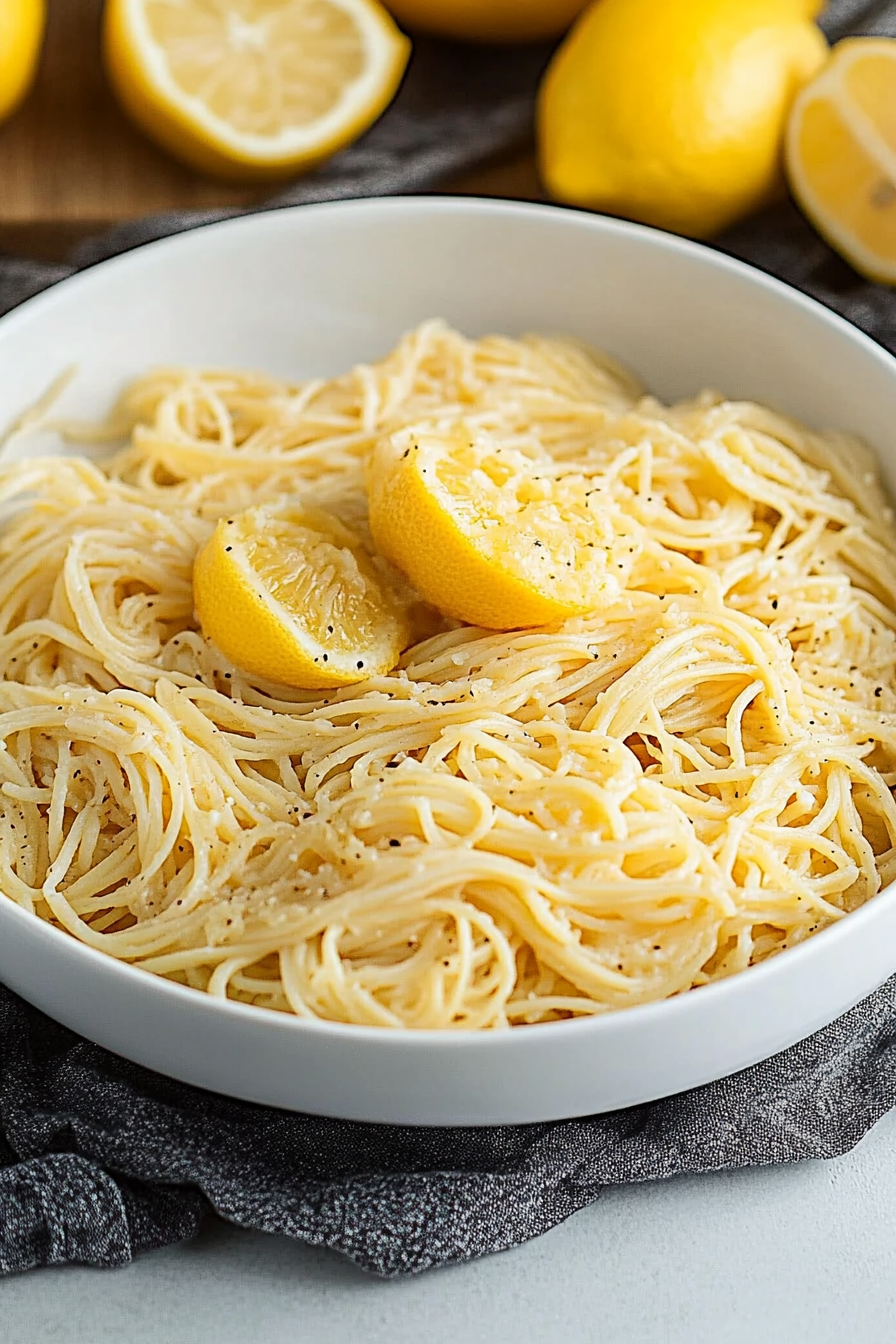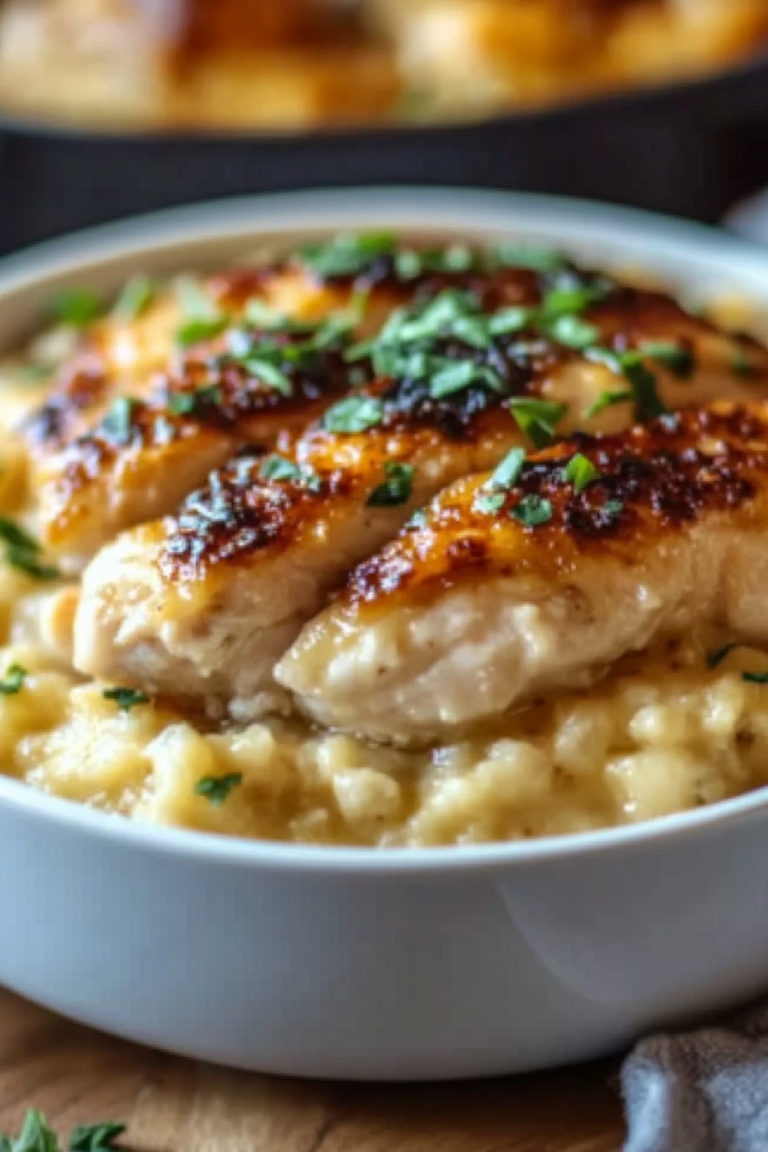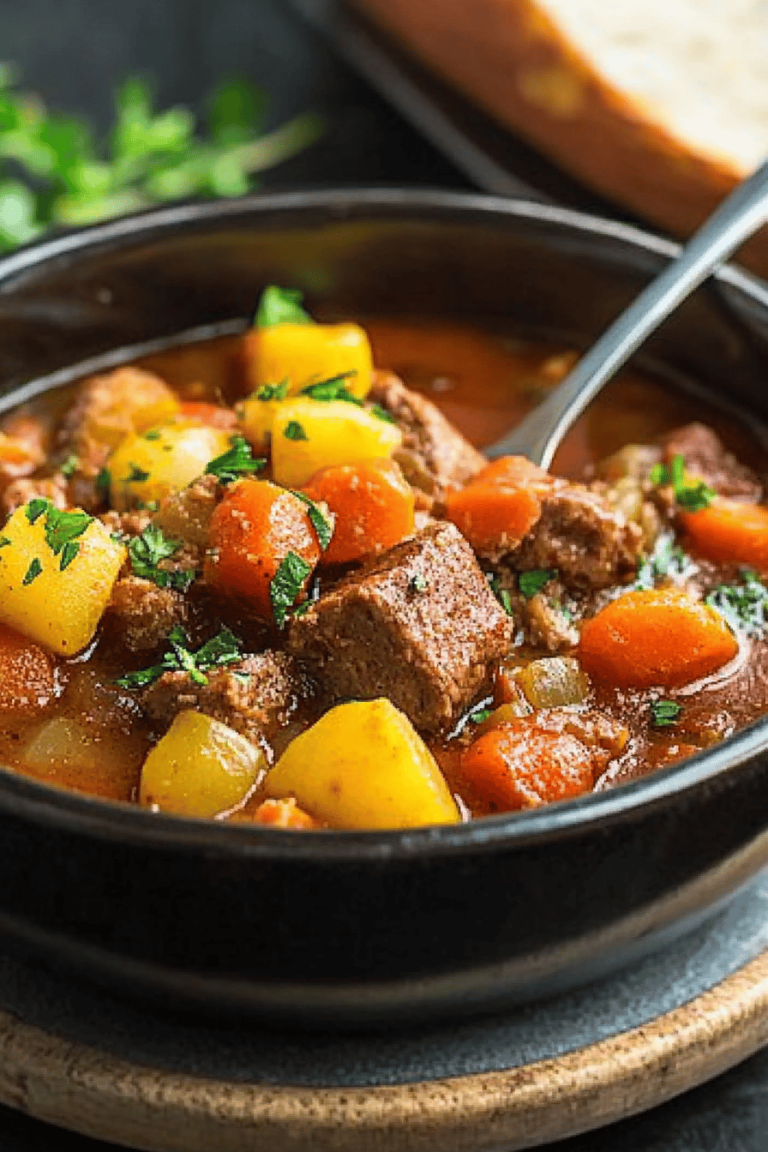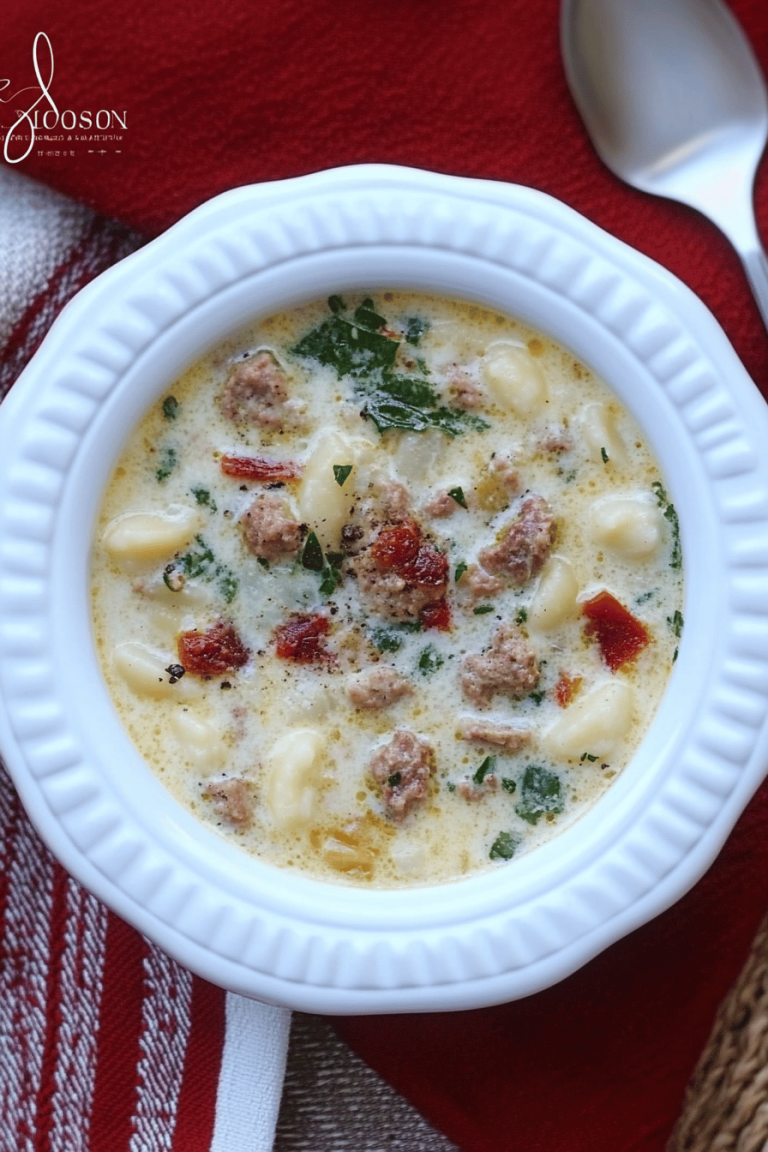When the kitchen fills with the bright, sunlit scent of lemon, I know dinner is about to become something special. This lemon pasta is my go-to on busy weeknights—simple, comforting, and somehow elevating everyday spaghetti into a hug in a bowl. I’ll admit: this dish sometimes feels reinvented every time I make it, and that zing of lemon keeps me coming back for more the way a shared slice of warm crusty bread does. I remember making this with a lemon that was a touch too tart, adding a pinch more parmesan and a splash of pasta water until the sauce gleamed like honey. The kids ask for seconds, the grownups lean in with smiles, and the leftovers vanish in minutes. It’s a dish that travels well from pot to plate, from casual weeknight to weekend dinner party, and it never loses that bright, buttery charm. If you’ve ever compared a lemony pasta to an alfredo, think of lemon pasta as the sunny cousin who still knows how to keep things cozy.
What is lemon pasta?
Think of lemon pasta as a celebration of bright citrus and silky pasta, without any fuss. It’s essentially spaghetti (or your favorite shape) tossed in a glossy sauce built from butter, olive oil, garlic, and lots of lemon—zest for perfume, juice for brightness—finished with parmesan and a shower of fresh herbs. There’s nothing heavy or complicated about it, which is exactly why it’s a lifesaver when you’re juggling work and family life. The lemon’s acidity cuts through the richness, so each bite feels light and refreshing even as you savor that comforting, cozy pasta hug. The name is simple in origin: lemon + pasta = a quick, vibrant classic that travels beautifully from kitchen to table. It’s a dish you can make with ingredients you already have on hand, and if you want a touch of glam, you can toss in a handful of shrimp or peas for color and texture. It’s essentially an everyday favorite that tastes like a little vacation in your own kitchen.
Why you’ll love this recipe?
What I love most about this lemon pasta is how it delivers flavor without a complicated checklist. The moment the pan hits the heat, the garlic sizzles, the butter melts, and the lemon aroma blooms, you’ll know you’re onto something special. It’s a flavor profile that feels extravagant but is actually incredibly approachable. The sauce emulsifies with a splash of the reserved pasta water, smoothing into a satin that clings to each strand of pasta just right. It’s also surprisingly forgiving: you can scale up or down the lemon intensity, add a pinch of chili flakes for warmth, or whisk in an extra knob of butter at the end for even more silk. This dish is budget-friendly—think pantry staples, a lemon or two, and good parmesan—and since it’s so fast, you can pull it together on those nights when you’ve got a hundred things to do and no time to wait. What I love most about this lemon pasta is its versatility: you can serve it as a simple weeknight main, a side to a roasted chicken, or the centerpiece of a quick, elegant dinner party. My kids ask for seconds, my husband finishes the last bite, and I feel instantly grounded in the kitchen I adore. It’s bright, it’s honest, and it never fails to pull everyone to the table with smiles.
How do I make lemon paste?
Quick Overview
Here’s the quick version: cook your pasta until al dente, zest a lemon for perfume, then whisk lemon juice with melted butter and olive oil to form a glossy sauce. Reserve a cup of pasta water, drain the pasta, and toss it all together over low heat, letting the starch in the water loosen the sauce into something velvety. Finish with parmesan, black pepper, and chopped parsley. If you like a little heat, a pinch of chili flakes slides in beautifully. The beauty is in the balance: bright lemon, creamy texture, and a little salty bite. It’s simple, fast, and deeply satisfying.
Ingredients
For the Main Batter:
– 12 oz (340 g) spaghetti or your favorite long pasta, cooked to al dente texture.
– 2 tbsp unsalted butter
– 2 tbsp extra-virgin olive oil
– 1 large lemon, zest and juice (about 2–3 tbsp juice, adjust to taste)
– 1/2 cup (about 40 g) finely grated parmesan, plus extra for serving
– 1–2 garlic cloves, minced or finely grated
– 1/4 tsp red pepper flakes (optional, to taste)
– Salt and freshly ground black pepper, to taste
– 1/2 cup (120 ml) reserved pasta cooking water (start with 1/4 cup, add more as needed)
For the Filling:
– Optional add-ins to “fill out” the bowl: 1 cup small peas or thawed frozen peas, 1 cup sautéed zucchini ribbons, or 6–8 shrimp, peeled and cooked; all add a fresh dimension if you want a heartier plate
For the Glaze:
– Zest extra lemon (from 1/2 lemon) for finishing a bright perfume on top
– A drizzle of extra-virgin olive oil and a light dusting of parmesan for finish
Step-by-Step Instructions
Step 1: Preheat & Prep Pan
Fill a large pot with water, salt generously, and bring to a rolling boil. While that happens, zest the lemon first—the zest is where the perfume lives. Mince the garlic and set aside. If you’re using shrimp or veggies, have them ready to go in a quick sauté so they’re hot and ready by the time the pasta finishes.
Step 2: Mix Dry Ingredients
In a small bowl, whisk together the minced garlic, red pepper flakes (if using), a pinch of salt, and a generous crack of black pepper. This is your flavor base, so don’t rush this step—let the garlic perfume bloom a touch in the oil later on.
Step 3: Mix Wet Ingredients
In a separate bowl, combine lemon juice with the zest and the butter. Heat them gently in a small skillet until the butter is fully melted and the mixture looks glossy. This is your tangy, buttery sauce ready to emulsify with the pasta water.
Step 4: Combine
When the pasta is just shy of al dente, reserve about 1 cup of the starchy pasta water, then drain the pasta. Return it to the warm pot and pour in the lemon-butter mixture, followed by the olive oil. Toss on low heat, gradually adding the reserved pasta water as you toss, until the sauce coats each strand in a silky sheen. The starch in the water helps the sauce cling to the pasta beautifully.
Step 5: Prepare Filling
If you’re using peas, zucchini, or shrimp, sauté them quickly in a skillet with a little olive oil just until warmed through or lightly seared. Fold them into the pasta now, if you like. This step is optional but it’s a terrific way to add color, texture, and protein if you want a heartier dish.
Step 6: Layer & Swirl
Scatter in the grated parmesan and a final pinch of zest for brightness. Give the pasta a few gentle flips until everything resembles a glossy swirl. You’re aiming for a satin-like sauce that clings to every noodle but doesn’t look greasy.
Step 7: Bake
This recipe doesn’t require baking in the oven, which is a nice relief on busy nights. If you’re actually baking something like a lemon pasta bake with breadcrumbs and extra cheese, you’d set the oven to 375°F (190°C) and bake just until the top is gold and bubbly. For our skillet version, you’re finishing on the stovetop, not in the oven, and the heat is gentle to preserve the glossiness of the sauce.
Step 8: Cool & Glaze
Turn off the heat and give the pasta one final fold with a splash of olive oil, a bit more parmesan if you love it, and a final kiss of lemon zest. This is your glaze moment—the light, fragrant finish that makes the dish glow.
Step 9: Slice & Serve
Plate with a little extra parmesan, a dusting of black pepper, and a final squeeze of lemon if you crave extra brightness. I like to finish with a handful of chopped flat-leaf parsley for color and a hint of fresh herbs. Serve immediately while it’s warm and glossy. This lemon pasta shines on a simple dinner table, and the aroma alone tends to pull everyone to the kitchen.
What to Serve It With
This lemon pasta is a crowd-pleaser no matter how you frame it. Here are a few ideas that keep the theme light and bright while letting you tailor it to the occasion.
For Breakfast: serve with a side of light, tangy yogurt with honey and almonds, or a soft-boiled egg plated over the pasta for a brunchy twist. The brightness of the lemon wakes up the palate, pairing nicely with a mineral coffee or a sparkling water with a twist of lemon.
For Brunch: platter of marinated olives, chopped herbs, and a loaf of crusty bread. A pitcher of citrusy sparkling lemonade or a light white wine spritzer makes the meal feel festive without being heavy.
As Dessert: okay, lemon can stand in for dessert too if you top it with a drizzle of honey and a candied lemon slice, or you can pair the pasta with a tiny spoonful of lemon-curd-filled tartlets for a cheeky, playful ending.
For Cozy Snacks: keep a warm pot of this lemon pasta on the stove during a movie night with friends—the scent alone draws people in. A side of Garlic Bread or a simple arugula salad keeps the meal balanced and comforting.
In our house, this dish often accompanies a simple roasted chicken with olive oil and herbs, letting the lemon pasta’s brightness shine without competing flavors. It’s become a little tradition: after a long day, we gather, share stories, and twirl our forks in a bright bowl of lemon pasta. The memory of that first bite—how the lemon zing collided with the creamy richness—remains a reminder that simple ingredients can be transformed into something warmly memorable.
Top Tips for Perfecting Your Lemon Pasta
These little tricks came from years of cooking this on rushed weeknights and quiet Sundays alike. They’re not flashy, but they’re the kind of detail that makes a big difference.
Zucchini Prep: If you’re adding zucchini ribbons, salt them lightly and let them rest for 10 minutes, then pat dry. It helps shed excess moisture so they won’t water down the sauce. A quick sauté until tender-crisp keeps them vibrant and not mushy.
Mixing Advice: Don’t dump all the pasta water at once. Add a little at a time, tossing and watching the emulsion form. If the sauce looks too loose, splash in a touch more water; if it’s too thick, loosen with another spoonful of pasta water. The starch is your ally here.
Swirl Customization: For visual appeal, you can swirl in a few ribbons of lemon zest and parsley after plating. A light drizzle of olive oil on top gives a glossy finish that glistens under light.
Ingredient Swaps: If you’re dairy-free, swap butter for an olive oil–heavy emulsified sauce with a bit more lemon and a splash of almond milk toward the end; it won’t be identical, but it can be deliciously bright in its own way. For a richer bite, use half parmesan and half pecorino. For a lighter touch, reduce the cheese and add more lemon and pepper.
Baking Tips: If you ever bake a version with a breadcrumb crust or a cheese topping, bake at 375°F (190°C) until golden. For the stovetop version, keep the heat low enough to maintain the gloss—watch for clumping if the sauce gets too hot.
Glaze Variations: Try finishing with a teaspoon of caper brine for a briny pop, or a handful of toasted pine nuts for crunch. A hint of fresh thyme or oregano can also bring a new dimension to the dish.
Lessons learned: when I overdo the lemon, the dish loses its balance. Trust the gentle kiss of lemon—enough to brighten but not overwhelm. My mother used to tell me, “Taste as you go, darling,” and that little rule has saved me countless times. The best lemon pasta is the one that tastes like you’re eating the sun’s own brightness, right there on your plate.
Storing and Reheating Tips
Leftovers happen in this house, so here are the best ways to keep lemon pasta delicious for a second meal, without losing its soul.
Room Temperature: Freshly made lemon pasta is best enjoyed warm. If you need to hold it briefly, cover loosely and keep in a cool location for up to 1 hour. Don’t leave it out longer than that, or the sauce may separate.
Refrigerator Storage: Store in an airtight container for up to 2 days. Reheat gently in a skillet with a splash of water or broth, over low heat, until warmed through and glossy again. You may need to whisk a touch of extra lemon juice to recapture that zing.
Freezer Instructions: This dish doesn’t freeze especially well as written because the texture of the sauce can change. If you do freeze, keep only the dry components separate from the sauce and combine fresh when reheating. You’ll want to finish with an extra lemon zest and a light drizzle of olive oil after reheating.
Glaze Timing Advice: If you plan to store leftovers, skip the extra lemon glaze on day one and add it fresh when reheating. That keeps the brightness crisp and prevents the sauce from darkening or dulling on day two.
Quality indicators: the best leftovers are glossy, not clumpy, and have a bright lemon aroma with a smooth mouthfeel. If you notice the sauce thinning or separating, add a teaspoon of pasta water and whisk until it regains its sheen.
Frequently Asked Questions
Final Thoughts
If you’re ever tempted to skip the bright note of lemon in a pasta dish, don’t. This lemon pasta is a reminder that simplicity can be deeply satisfying. It’s a dish I’ve cooked for family dinners, a quick weeknight fix, and a simple demonstration that you don’t need a long list of ingredients to make something feel special. The lemon’s fragrance, the butter’s silk, the parmesan’s salt—these things come together in a way that makes the kitchen feel like a warm hug. I hope you’ll try it and tell me how you customize it—whether you add shrimp, peas, or a little chili for kick. I’d love to hear your variations and which part of the dish wins you over each time. Happy cooking, and may your lemon pasta moments be bright and comforting. If you try it, drop a comment with your tweaks or share a photo of your plate. Can’t wait to hear how yours turns out!
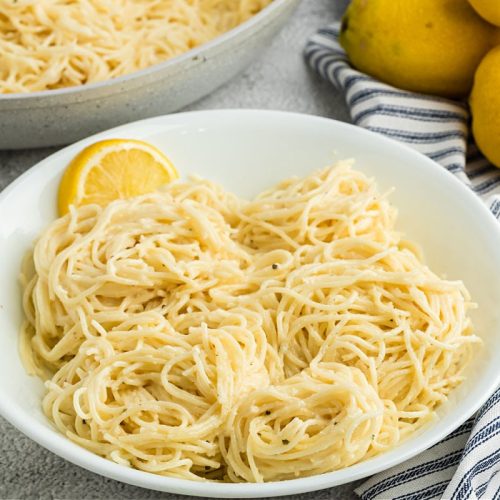
lemon pasta
Ingredients
Main Ingredients
- 8 oz spaghetti (dry)
- 1 tablespoon olive oil
- 4 cloves garlic (minced)
- 0.25 teaspoon red pepper flakes
- 2 lemons lemon juice from fresh lemons
- 1 cup vegetable broth
- 0.5 cup heavy cream
- 0.5 cup parmesan cheese grated
- salt to taste
- black pepper to taste
Instructions
Preparation Steps
- In a large skillet, heat olive oil over low heat. Add minced garlic and red pepper flakes; cook until fragrant, about 1 to 2 minutes.
- Stir in lemon juice and vegetable broth; add heavy cream and simmer until slightly thickened, about 5 minutes.
- Toss cooked spaghetti with the sauce and parmesan until evenly coated. Season with salt and pepper to taste. Serve immediately.

